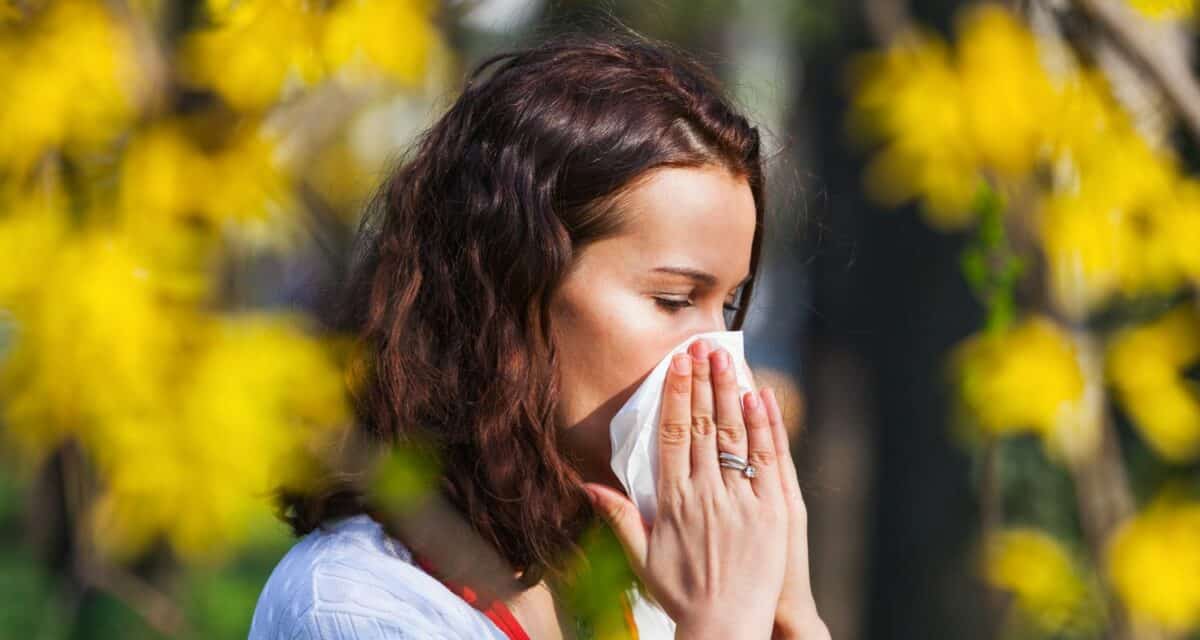Spring is in the air, and for many people, so is the dreaded tree pollen. If you’re one of the millions of Americans who suffer from tree pollen allergies, you know how frustrating it can be to navigate the spring and summer months. But the good news is that there are ways to manage your allergies and reduce your symptoms.
Causes of Tree Pollen Allergies
Allergies happen when the immune system overreacts to a foreign substance, in this case, pollen.
The time when you’re likely to encounter tree pollen depends on the type of tree and the climate in your area. In general, trees start releasing pollen in the spring, usually in March or April, and continue through May or June. However, some trees may release pollen earlier or later in the season. For example, birch trees usually release pollen in early spring, while oak trees release pollen later in the season. The timing and amount of pollen release can also be affected by weather conditions, such as temperature, humidity, and wind.
If you suspect you have a tree pollen allergy, it’s a good idea to check local pollen counts and track your symptoms to determine which trees are causing your allergy symptoms.
Symptoms of Tree Pollen Allergies
The symptoms of tree pollen allergies can range from mild to severe, and they can vary depending on the person. Common symptoms include sneezing, runny nose, itchy eyes, and congestion. However, there are lesser-known symptoms such as fatigue, headaches, and even mood changes. If left untreated, allergies can lead to complications such as sinus infections, ear infections, and asthma.
Treatment Options
If you suspect you have tree pollen allergies, it’s crucial to seek medical attention. A doctor can diagnose your allergies through a variety of methods, including skin tests and blood tests. Allergy testing is a quick and painless process that can help you determine the cause of your symptoms.
There are various medications available to alleviate allergy symptoms, including antihistamines and nasal sprays. Natural remedies such as steam inhalation and saline nasal rinses can also provide relief. Immunotherapy, also known as allergy shots, can desensitize your immune system to allergens and provide long-term relief.
Lifestyle Changes to Manage Allergies
In addition to medication and immunotherapy, lifestyle changes can help manage tree pollen allergies. Making small adjustments to your daily routine can reduce your exposure to pollen and alleviate your allergy symptoms.
Check pollen counts: Check the pollen count in your area before heading outdoors. You can find pollen counts online or through a mobile app. Try to plan your outdoor activities for times when the pollen count is lower.
Keep windows and doors closed: To minimize your exposure to pollen, it’s recommended to keep windows and doors closed, particularly during peak pollen times. Instead, consider using air conditioning to maintain a comfortable and cool indoor environment.
Remove shoes and clothing: Remove your shoes and outerwear when you come inside to avoid tracking pollen throughout your home. Shower and change clothes to remove any pollen that may be on your skin or hair.
Use an air purifier: An air purifier with a HEPA filter can be an effective tool for managing tree pollen allergies. Air purifiers equipped with HEPA filters can capture small particles, including pollen, pet dander, and dust mites, which are known triggers of allergy symptoms. Utilizing an air purifier with a HEPA filter can significantly decrease the level of pollen in the air, thereby reducing your allergy symptoms and enhancing the overall air quality of your home.
Clean regularly: Regularly clean your home to remove dust, pet dander, and other allergens that can exacerbate your symptoms. Vacuum carpets and upholstery, wash bedding in hot water, and dust surfaces with a damp cloth.
Modify your diet: Some foods may worsen allergy symptoms, while others may provide relief. Try to avoid foods that trigger your allergies, such as dairy products, wheat, and soy. Incorporate foods that may help reduce inflammation and allergy symptoms, such as fish, leafy greens, and probiotics.
Manage stress: Stress can worsen allergy symptoms, so it’s essential to manage stress through relaxation techniques such as deep breathing, yoga, or meditation.
Managing tree pollen allergies can be challenging, but it’s possible with the right strategies and treatment. If you’re struggling with tree pollen allergies, don’t wait to seek treatment. Our practice offers comprehensive allergy testing and treatment options to help you manage your symptoms effectively. Contact us today to schedule an appointment and take the first step towards allergy relief. Don’t let allergies keep you from enjoying the beautiful spring weather – take action and manage your allergies today.

